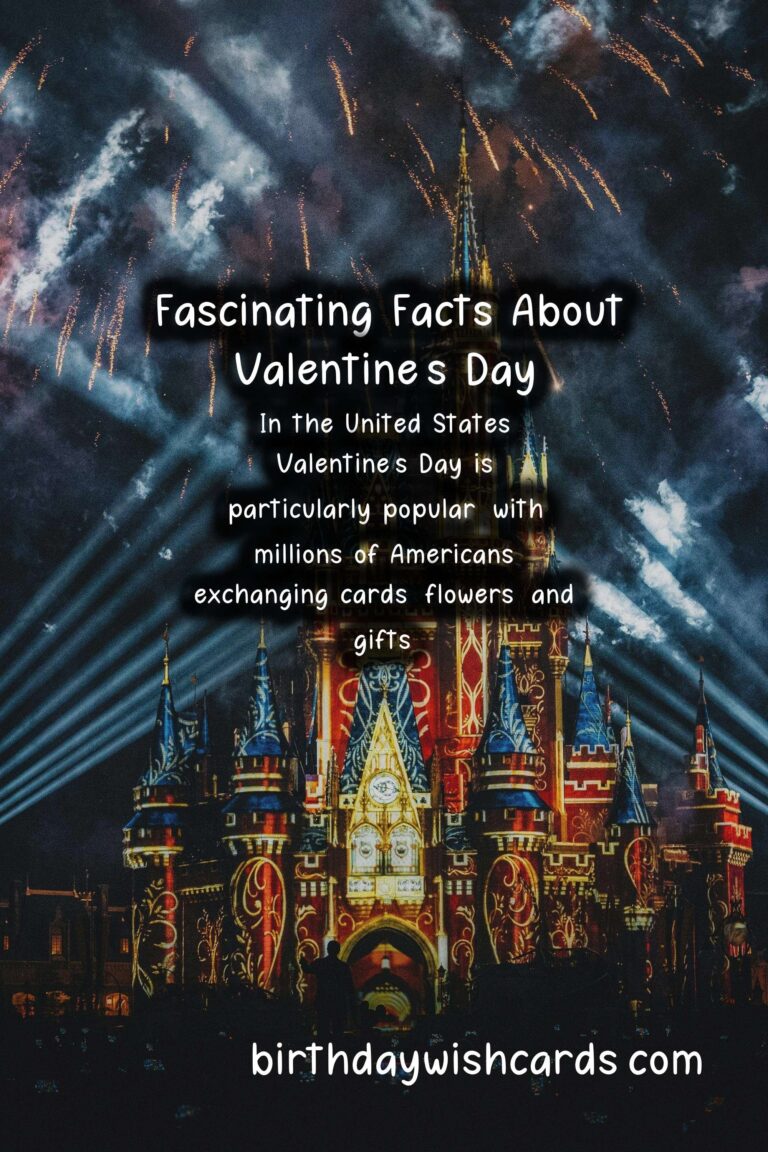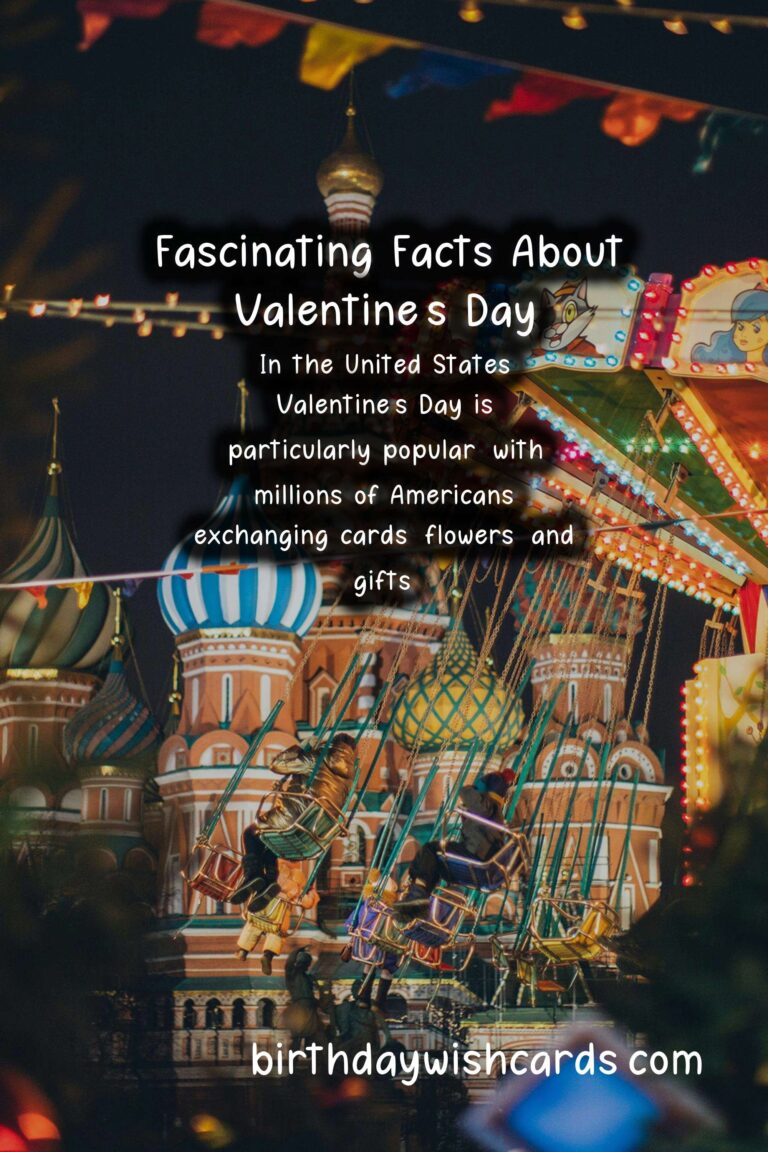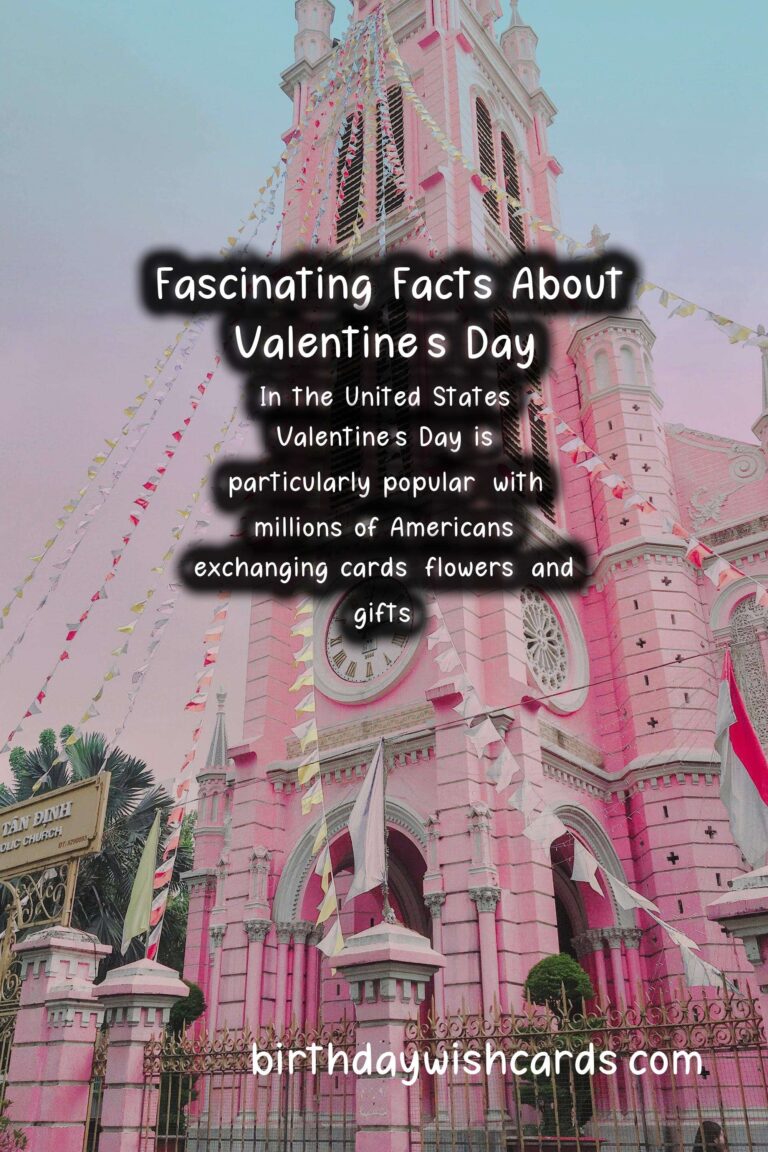
Valentine’s Day, celebrated on February 14th each year, is a day dedicated to love and romance. It has a rich history and many interesting traditions around the world. In this article, we will explore some fascinating facts about Valentine’s Day that might surprise you.
The Origins of Valentine’s Day
The history of Valentine’s Day dates back to ancient times. One of the most popular theories suggests that it honors Saint Valentine, a priest who lived in the 3rd century Rome.
Saint Valentine was known for secretly marrying couples during a time when Emperor Claudius II had banned marriages for young men, believing single men made better soldiers. When discovered, Valentine was imprisoned and eventually executed on February 14.
Symbols of Love
Love is represented by various symbols throughout the world during Valentine’s Day, such as hearts, roses, and Cupid.
The heart shape, commonly associated with love, is believed to have originated from the shape of the silphium plant seed, which was used in ancient times as a seasoning and contraceptive.
Valentine’s Day Traditions Worldwide
Different countries celebrate Valentine’s Day with unique traditions. For instance, in Japan, women give chocolates to men on February 14, while men are expected to return the favor a month later on White Day.
In South Korea, February 14 is a day for couples, while April 14 is dedicated to those who are single, known as Black Day, where they eat black noodles to symbolize their single status.
Valentine’s Day in the United States
In the United States, Valentine’s Day is particularly popular, with millions of Americans exchanging cards, flowers, and gifts. An estimated 145 million Valentine’s Day cards are sent each year, making it the second-largest card-sending holiday after Christmas.
The Valentine’s Day card tradition began in the early 1900s when Hallmark began mass-producing cards for this occasion.
Economic Impact
Valentine’s Day brings a significant economic impact. According to the National Retail Federation, Americans are expected to spend billions of dollars on gifts, dining, and experiences related to the holiday, showcasing the economic importance of love.
Popular Gifts and Sending Love
Common gifts during Valentine’s Day include chocolates, heart-shaped jewelry, and flowers, especially red roses, symbolizing love and passion.
Florists and chocolate shops see a dramatic increase in sales leading up to Valentine’s Day, marking it as one of their busiest times of the year.
Fun Valentine’s Day Statistics
Did you know that over 36 million heart-shaped boxes of chocolates are sold each year? Or that about 73% of people who celebrate Valentine’s Day are expected to purchase some form of gift?
Valentine’s Day and Technology
With the advent of technology, many couples now celebrate Valentine’s Day virtually. Video calls, e-cards, and social media have created new ways for people to connect on this special day, especially in recent times.
Conclusion
Valentine’s Day is more than just a day for couples; it’s a celebration of love in all its forms. Whether you’re celebrating with a partner, friends, or family, it’s a time to show appreciation and affection. With its rich history and evolving traditions, Valentine’s Day remains a fascinating topic worth exploring.
Valentine’s Day, celebrated on February 14th each year, is a day dedicated to love and romance. In the United States, Valentine’s Day is particularly popular, with millions of Americans exchanging cards, flowers, and gifts. 













